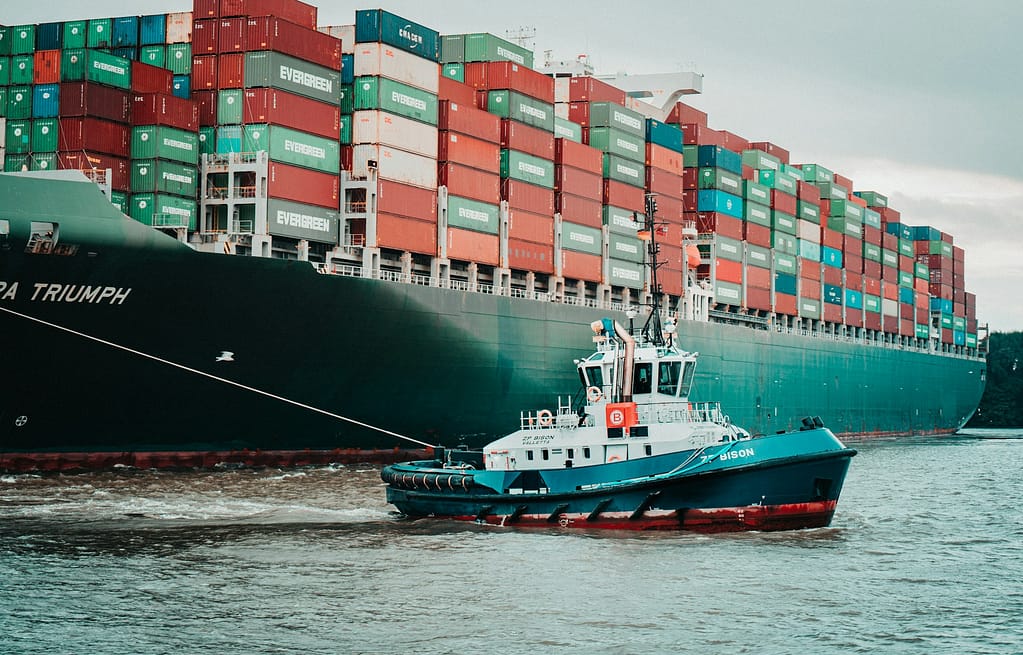In late 2022, the European Commission established a landmark regulation known as the Corporate Sustainability Reporting Directive (CSRD). This critical initiative aims to transform how businesses approach environmental, social, and governance (ESG) factors. One can say the CSRD seeks to drive a more sustainable future for Europe and beyond.
This regulation focuses on three key areas of a company’s impact:
- Scope 1: direct emissions from a company’s operations, such as fuel combustion in factories;
- Scope 2: indirect emissions from purchased electricity, heat, or cooling;
- Scope 3: all other indirect emissions occurring throughout a company’s value chain, including those from suppliers, transportation of goods, and product use.
This article will delve specifically into measuring Scope 3 Emissions for CSRD, often the most complex and challenging reporting aspect. We’ll also explore the challenges related to the process and possible consequences of reporting imprecise values on the CSRD.
Measuring Scope 3 for CSRD: how is it done?
While Scope 1 and 2 emissions are relatively straightforward to measure (direct emissions from a company’s operations and purchased energy/heat/cooling), Scope 3 throws a massive curveball. This category encompasses all the indirect emissions that occur throughout a company’s entire value chain, but outside of its direct operations.

And then things get even more complicated – Scope 3 is further divided into 15 categories, each requiring meticulous attention to detail for accurate reporting. These categories include:
- Purchased goods and services: emissions generated by the production and transportation of goods and services a company acquires from suppliers;
- Transportation and distribution: emissions associated with the movement of products throughout the supply chain, including both inbound and outbound transportation;
- Waste generated in use: emissions released during the use of a company’s products by customers;
- Waste generated in operations: emissions associated with the disposal and treatment of waste generated during a company’s operations.
For large corporations with extensive supply chains and diverse product lines, measuring these emissions precisely is a daunting task. It often requires an elaborate approach involving:
- Data collection from suppliers: companies may rely on requesting detailed emissions data from their suppliers. This can be an extremely time-consuming and challenging process, as suppliers may not have readily available or standardized data collection methods;
- Industry benchmarks and databases: large corporations can utilize industry-specific databases and benchmarks to estimate emissions for certain activities within their supply chain. However, despite being time-efficient, these estimates are never as accurate as direct measurements;
- Life Cycle Assessment (LCA): conducting comprehensive LCAs can provide a detailed breakdown of a product’s environmental impact throughout its lifecycle, including Scope 3 emissions. This process is often expensive and time-consuming, however.
Challenges of reporting and measuring Scope 3 for CSRD
The current methods for measuring Scope 3 Emissions often involve a significant degree of estimation and data gathering from external sources.
This lack of standardized and readily available data creates a major hurdle for corporations. Imagine piecing together a complex puzzle where crucial pieces are missing or unreliable – sounds tough, right?
By the way, the challenge lies not just in acquiring data, but also in its accuracy and consistency. Supply chains can be vast and complex, spanning diverse industries and geographical locations. Then, corporations rely on information provided by their partners, which can vary greatly in quality and methodology.
All in all, this inconsistency makes it difficult to establish a clear baseline and track emissions over time.

Furthermore, the sheer volume of data involved in Scope 3 reporting can be overwhelming. Corporations must account for many indirect sources from transportation emissions to purchased goods and services.
You might be asking: what about manual data collection? Well, collecting and analyzing massive amounts of data by hand is an extremely time-consuming and resource-intensive process, which is further hindered by being prone to human error. In pretty much all cases, it’s a no-no.
Possible consequences of inaccurate CSRD’s Scope 3 reporting
And what could be the consequences of inaccurate or incomplete Scope 3 reporting? Misleading or wrongful data can have a significant impact on a corporation’s CSRD compliance and reputation.
Stakeholders increasingly demand transparency and accountability on environmental performance. Inaccurate data can raise serious questions about a corporation’s commitment to sustainability and potentially damage trust with investors, consumers, and other stakeholders.
For example, a corporation may underestimate its true environmental footprint due to incomplete data on transportation emissions within its supply chain. This could lead to non-compliance with CSRD regulations and potential fines.
Additionally, stakeholders who discover inconsistencies or discrepancies in the reported data may perceive the corporation as greenwashing or lacking commitment to sustainability goals.
This could damage the corporation’s reputation and brand image, potentially impacting consumer buying decisions and investor confidence.
Measuring Scope 3 for CSRD: closing thoughts
The CSRD represents a significant step towards a more sustainable future, and accurate Scope 3 reporting is crucial for its success. While challenges exist, there are many solutions to bridge the data gap and streamline reporting processes.

However, it requires a proactive approach: companies must embrace transparency and invest in reliable data collection methods to achieve accurate Scope 3 reporting. This not only ensures CSRD compliance but also demonstrates a genuine commitment to environmental responsibility, attracting investors concerned with brand image, and building trust with stakeholders.
This is where Thingfox’s tracking devices come in.
Introducing the Thingfox T2 Tracker for measuring Scope 3 for CSRD
The versatile Thingfox T2 tracker provides a comprehensive solution for a wide range of asset-tracking needs. From monitoring valuable equipment to optimizing fleet management, the T2 tracker provides businesses with real-time location data and actionable insights.
Introducing the Thingfox Scope 3 Tracker for measuring Scope 3 for CSRD
Specifically designed for CSRD compliance, the Thingfox Scope 3 Tracker seamlessly integrates with trucks, capturing real-time fuel consumption and CO2 emissions data. This allows corporations to gather accurate transportation data within their supply chains, streamlining Scope 3 reporting and enhancing overall sustainability efforts.
Datanet IoT: your one-stop shop for tracking solutions
Datanet IoT offers a comprehensive suite of tracking solutions beyond Scope 3 and asset tracking. From real-time oceanographic equipment monitoring to environmental parameters tracking, we have the perfect solution for all your tracking needs.
Don’t let complex tracking challenges hinder your progress anymore! Contact us at Datanet IoT today for more information on how these trackers can benefit your business operations while taking care of CSRD regulations, thus contributing to a more sustainable future.





